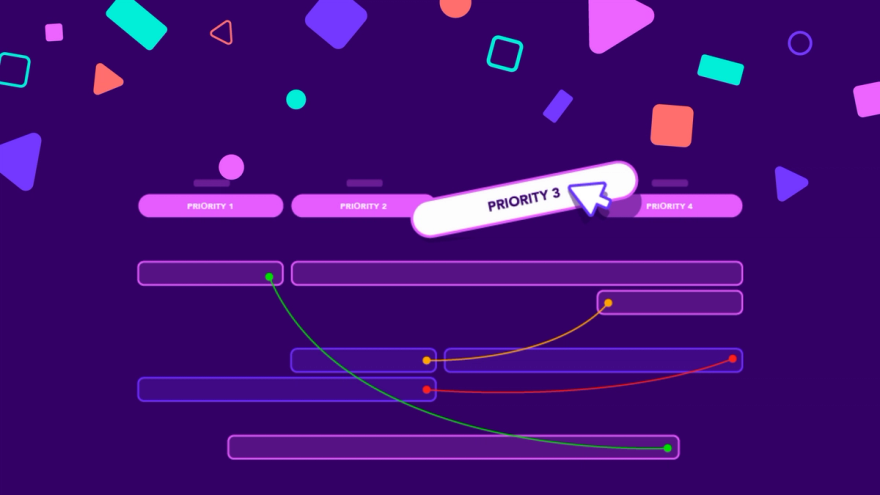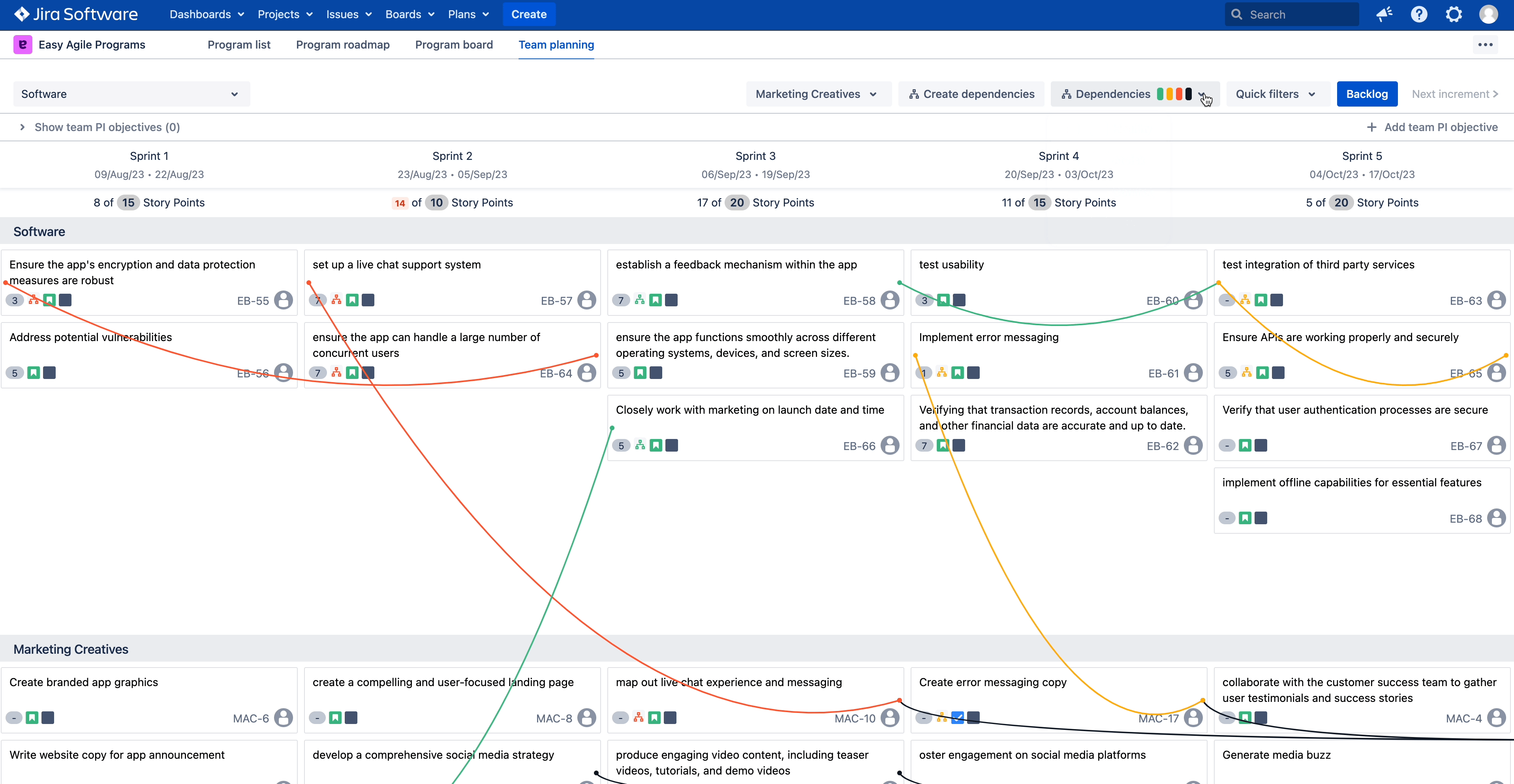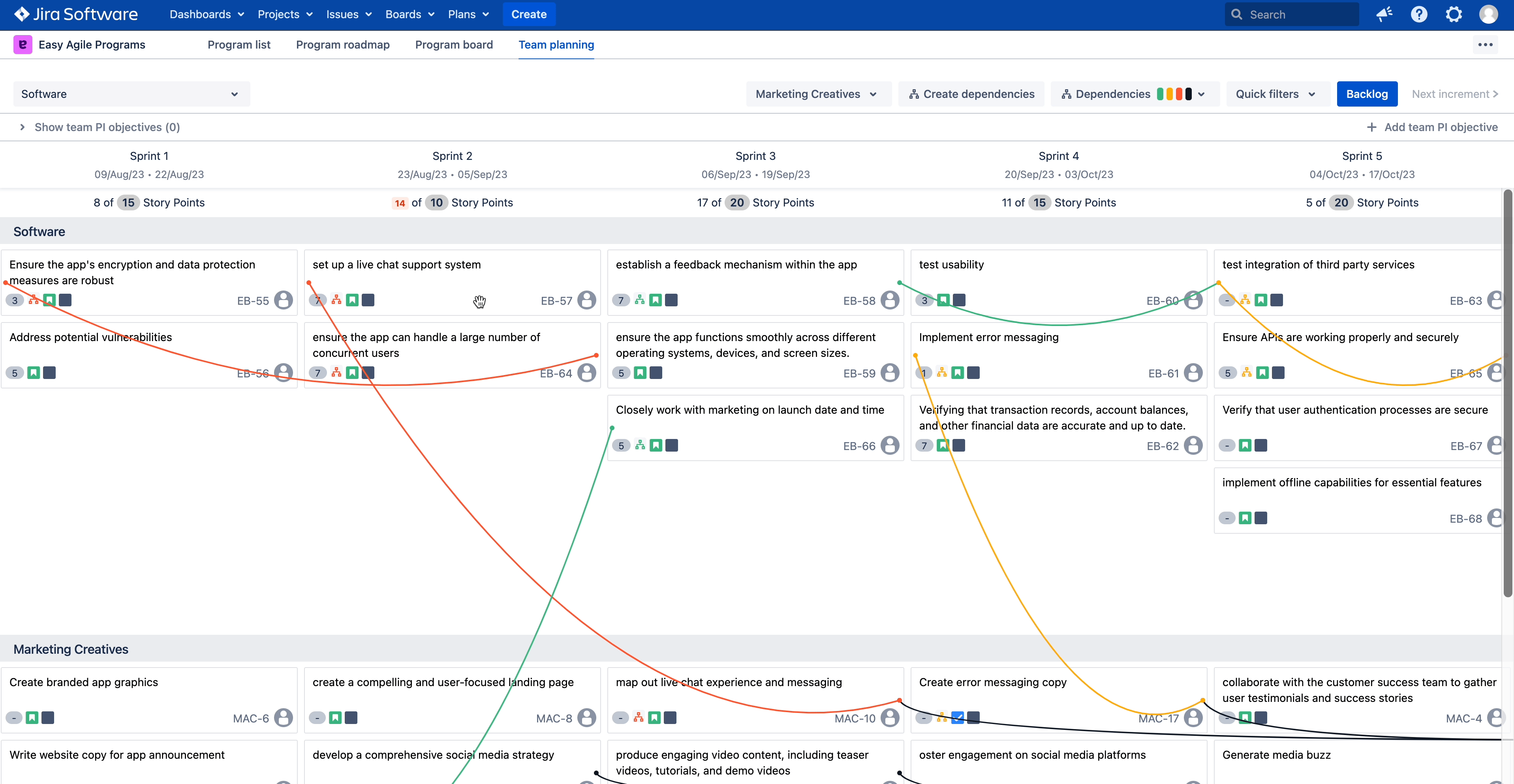Agile best practice
5 min read

How SAFe & Visualization of Dependencies Empower Businesses at Scale
Mon Aug 14 2023
Many organizations, especially those in highly regulated industries, struggle to manage large-scale projects. SAFe, or the Scaled Agile Framework, can provide a solution. (OR That's where SAFe, or the Scaled Agile Framework, comes into play.)
SAFe is a framework designed to help businesses make sustainable changes on a large scale. It offers training and guidance for implementing agile practices across the enterprise, whether it's at a small team level, department level, or throughout the entire organization.
In this blog post, we will delve deeper into the benefits of implementing SAFe, focusing specifically on how it can be utilized within the financial services industry to create a lean enterprise.
Benefits of SAFe for financial services
SAFe (Scaled Agile Framework) is an incredibly valuable approach for organizations looking to enhance their operations. By adopting SAFe, financial services firms can achieve numerous benefits that are specific to their industry.
- Business Agility: SAFe enables financial services firms to become more adaptable and responsive to market dynamics. By adopting SAFe practices at an enterprise level, organizations can foster a culture of continuous improvement, allowing them to quickly adapt to changing customer demands, regulatory requirements, and emerging technologies.
- Enhanced Customer Experience: In today's competitive financial services landscape, providing exceptional customer experiences is paramount. SAFe promotes customer-centricity by encouraging regular feedback loops with customers throughout the development process. This allows financial institutions to gather insights, identify pain points, and rapidly iterate on their products and services, ensuring they meet the evolving needs and expectations of their customers.
- Accelerated Time-to-Market: Time is of the essence in the financial industry. SAFe empowers organizations to speed up their time-to-market by breaking down silos and fostering collaboration between departments. By leveraging agile practices, financial services firms can respond quickly to market opportunities, launch innovative solutions faster ensuring they are first to seize market opportunities
- Risk Mitigation: Compliance and risk management are critical considerations for financial services organizations. SAFe provides a structured governance framework that incorporates compliance requirements into the development process. This ensures that products and services adhere to regulatory standards.
- Improved Operational Efficiency: Financial services firms deal with significant complexity, from managing intricate financial systems to addressing regulatory demands. SAFe helps optimize operational efficiency by promoting transparency, communication, and continuous improvement. By implementing Lean principles and agile practices, organizations can eliminate waste, optimize processes, and enhance overall operational performance.
- Employee Engagement and Empowerment: SAFe emphasizes the empowerment of teams, fostering a culture of collaboration, innovation, and continuous learning. This approach leads to increased employee engagement, as team members feel more involved in decision-making processes and have a sense of ownership over their work. The result is a motivated and empowered workforce that drives organizational success.
Visualizing Dependencies for Seamless Collaboration and Timely Delivery
In the intricate world of SAFe, covering every aspect can be overwhelming. For the purpose of this blog, let's focus on a specific use case.
The financial services industry often deals with complex projects involving multiple teams and stakeholders. In such scenarios, visualizing and understanding dependencies among teams becomes critical. This is where the SAFe program board comes in. It acts as a centralized space for teams to effectively visualize, manage dependencies, and progress transparently.
Consider the example of Easy Agile Bank, preparing to launch its self-service banking platform. Various teams, including software, marketing, and customer success, collaborate to make this launch successful. To ensure a seamless rollout, understanding team dependencies and efficient work scheduling are paramount. The goal is to prevent bottlenecks that could delay the launch of the new self-service banking app.
Let’s take a closer look at what this might look like. Below you can see the Team Planning board in Easy Agile Programs for the Software team. The red, yellow, green and black lines indicate dependencies. Some dependencies exist within the software team, while others are cross-team dependencies with the marketing team.

The color of the dependency lines reflects their health status. A red dependency represents a conflict, yellow indicates at risk, green signifies a healthy state and black indicates external dependencies outside the current view, such as work in the backlog or in an other Program Increments. To avoid bottlenecks, you need to address the red dependencies and the yellow where possible.
With Easy Agile Programs, visualizing dependencies becomes effortless. Teams can act swiftly and adjust plans accordingly to prevent delays in the app launch. For instance, the software team identifies a red dependency with the marketing team regarding the live chat system. While the software team plans to set it up in Sprint 2, the marketing team don’t plan on mapping out the live chat experience and messaging until Sprint 3. The dependency line serves as a visual indicator, prompting teams to discuss and reschedule work.
After a brief discussion, the software team decides to reschedule the live chat setup to Sprint 4. As a result, the dependency line turns green, indicating a smooth progress and successful avoidance of a potential bottleneck.

“When I would ask colleagues how long it would take to untangle and understand dependencies, they would suggest a week. With Easy Agile Programs, it took us three minutes”.
Harness the Power of the SAFe Program Board
Overall, the program board can help teams prioritize their work and make informed decisions about resource allocation. By visualizing dependencies, teams can identify critical path items and focus their efforts on the most important tasks that need to be completed first. This ensures that teams are working in a coordinated, transparent manner and reduces the risk of unnecessary delays or conflicts.
The SAFe program board acts as a valuable tool for teams to effectively manage dependencies, promote collaboration, and achieve alignment in large-scale agile projects.
Easy Agile Programs allows teams to identify and create dependencies effortlessly, empowering teams to navigate the complex financial services landscape with ease.

